© 2025 MJH Life Sciences™ , Patient Care Online – Primary Care News and Clinical Resources. All rights reserved.
MMR Dose Match Challenge: Part 2
Sample: How many MMR doses should a man born in 1960 who was vaccinated at age 3 receive if he is travelling to Brazil in 4 months?

The upsurge in measles cases this year may have many of your patients worried about the status of their own protection or that of a child or other loved one. When the question comes up, what will you tell them about whether they need a dose of MMR vaccine? Per CDC guidelines, some may need a single dose, others 2 or 3 doses; still others won’t need any. (Please see next slide)
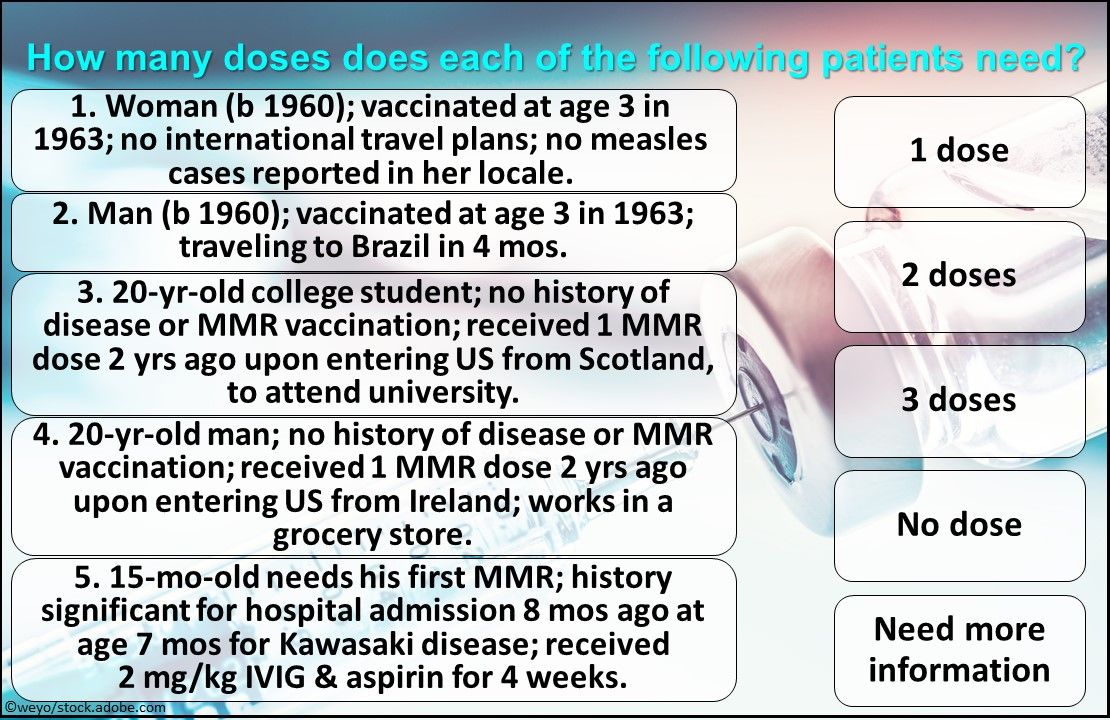
In part 2 of this MMR Match Quiz, review the 5 new patient scenarios above. Can you match each patient with the required dose of MMR vaccine? Click through the rest of the slides for the answers.
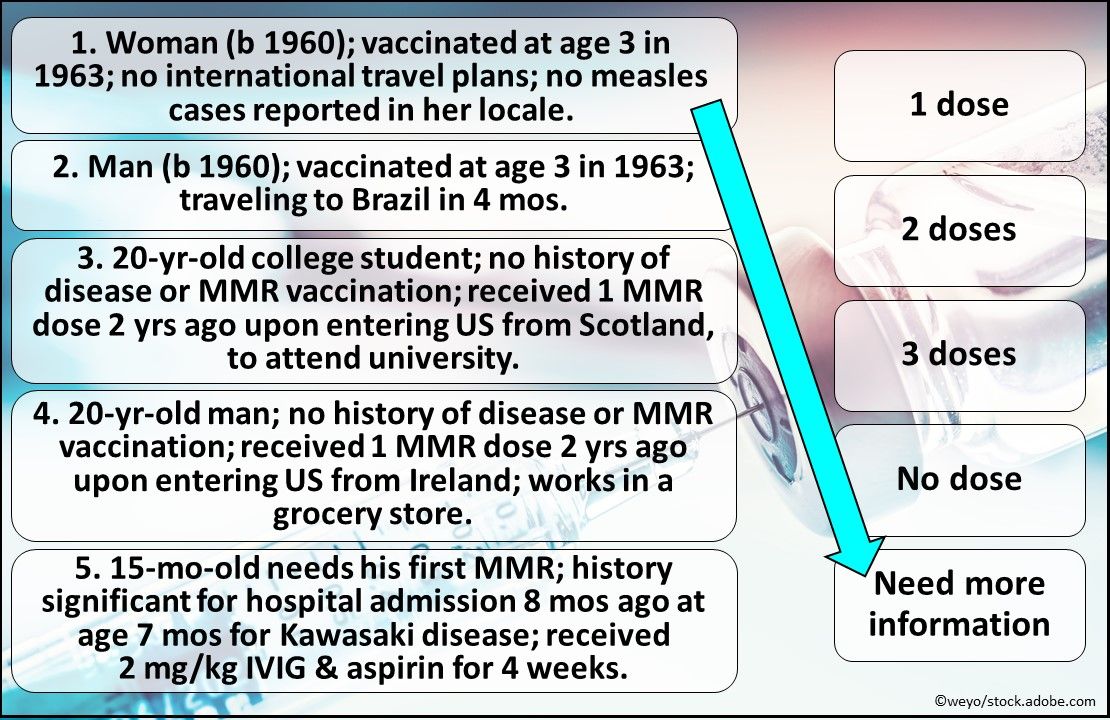
Scenario 1. Need more information. You will need more information from the woman in scenario 1. Live attenuated measles vaccine became available for use in 1963. An inactivated and mostly ineffective measles vaccine was also available from 1963-1967. If the woman is not sure she received the live vaccine, then you should consider her unimmunized. However, because she is in a low-risk setting, she should get 1 dose.
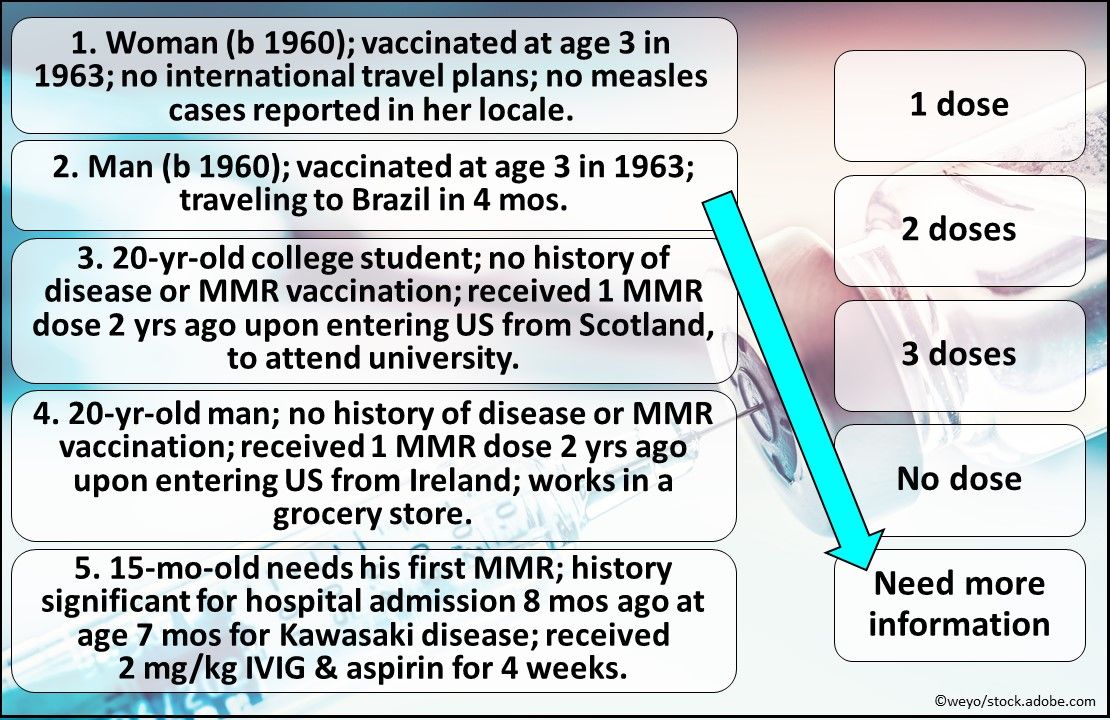
Scenario 2. Need more information. You will need more information from the man in scenario 2. Live attenuated measles vaccine became available for use in 1963; an inactivated and mostly ineffective measles vaccine was also available from 1963-1967. If the man is not sure he received the live vaccine, then you should consider him unimmunized. However, because he is in a high-risk setting, he should receive 2 doses separated by at least a month. If he did receive the live vaccine, he would need 1 more dose.

Scenario 3. Needs 2 doses. Unvaccinated adults born after 1957 need 2 doses of MMR if they are in a high-risk setting. Because college is considered a high-risk setting, the student will need 2 doses. The patient, however, already received 1 dose of MMR vaccine so he will need 1 more dose.
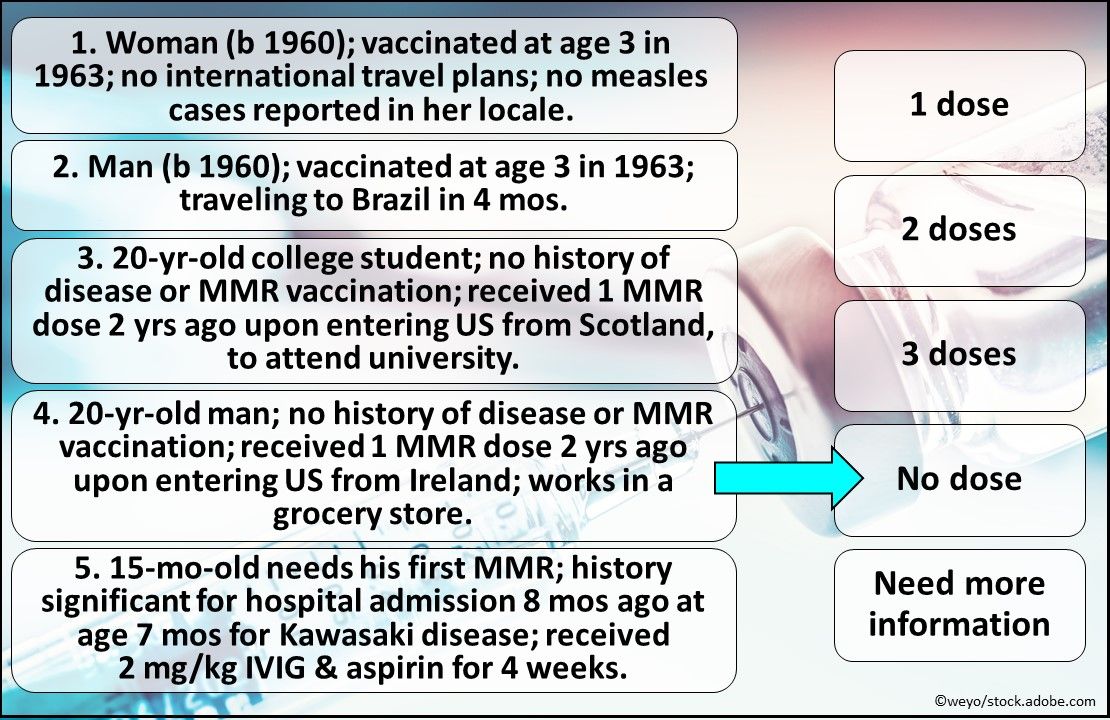
Scenario 4. No MMR needed. Unvaccinated adults born after 1957 need 1 dose of MMR if they are in a low-risk setting and a grocery store can be considered low-risk. Because he already received 1 dose, no more MMR vaccine will be needed for this patient.
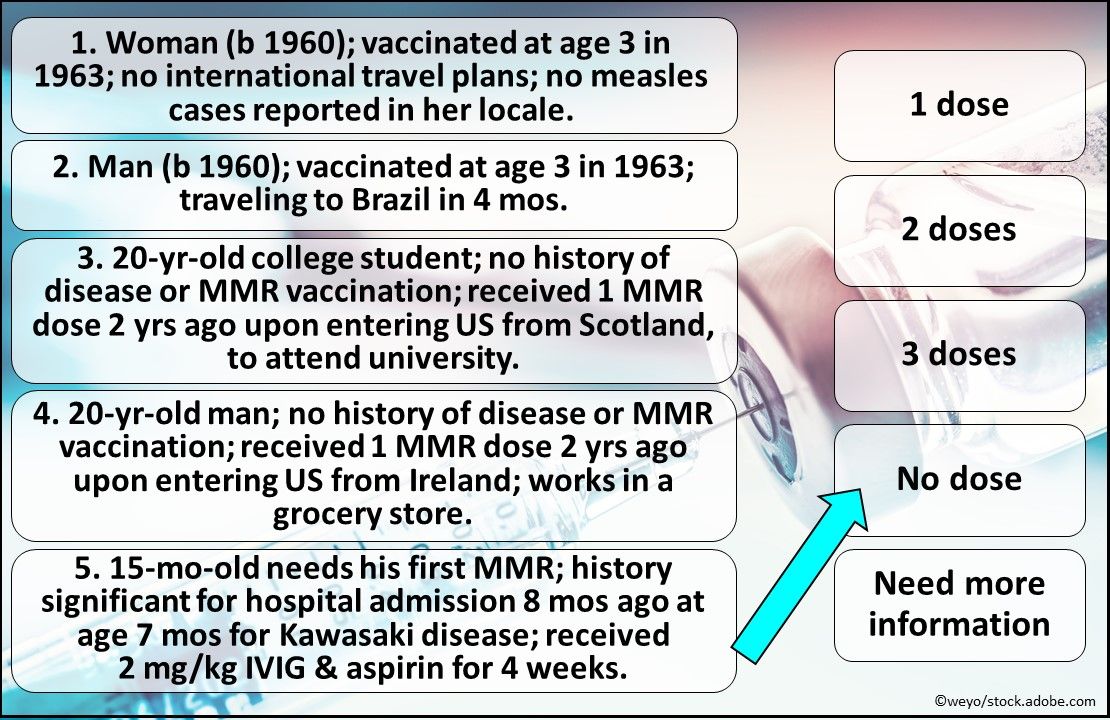
Scenario 5. No MMR needed today, but he will eventually need 2 doses. The CDC recommends an 11-month interval from that dose of IVIG to receipt of an MMR vaccine. The receipt of any blood products, other than washed red blood cells, results in the transfer of antimeasles antibodies that can interfere with the replication of the weakened measles virus in the vaccine leading to an inadequate long term immune response. A chart with the recommended interval between various antibody-containing products and receipt of the MMR vaccine (the same applies for the varicella vaccine) can be found here.
Want more patient scenarios? Part 1 of this MMR Match Quiz can be found here.
According to the Centers for Disease Control (CDC), between January 1 and August 1, 2019, there were nearly 1100 cases of measles in 30 states. This is the greatest number of cases reported in the US since 1992, with the majority of cases being among people who were not vaccinated.

